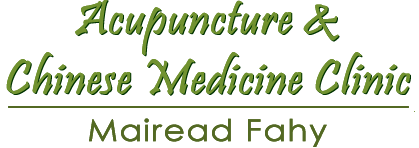Chinese Herbal Medicine has been used for centuries to effect healing, with the earliest records going back to 2800 BC.
 The first traditionally recognized herbalist is Shénnóng (“Divine Farmer”), a mythical god-like figure, who is said to have lived around 2800 BC. He allegedly tasted hundreds of herbs and imparted his knowledge of medicinal and poisonous plants to farmers. His Shénnóng Běn Cǎo Jīng (Shennong’s Materia Medica) is considered as the oldest book on Chinese herbal medicine. It classifies 365 species of roots, grass, woods, furs, animals and stones into three categories of herbal medicine.
The first traditionally recognized herbalist is Shénnóng (“Divine Farmer”), a mythical god-like figure, who is said to have lived around 2800 BC. He allegedly tasted hundreds of herbs and imparted his knowledge of medicinal and poisonous plants to farmers. His Shénnóng Běn Cǎo Jīng (Shennong’s Materia Medica) is considered as the oldest book on Chinese herbal medicine. It classifies 365 species of roots, grass, woods, furs, animals and stones into three categories of herbal medicine.
Contemporary Chinese Medicinal Herbs are strictly restricted to plant based materials.
When formulating a Chinese Medicine Herbal prescription, the practitioner/ herbalist, pays strict attention to the property of the herb chosen to suit the specific ailment of the person being treated.
Chinese herbs are categorised by:
• Temperature, i.e. Hot, Cold, Warm, Cool or Neutral,
• Taste / Flavour i.e. Sour, Sweet, Salty, Bitter, Pungent.
• Function within the prescription, i.e. Emperor or Chief herb. This herb is used to treat the key disease or symptom, and is usually prescribed at a higher dosage than the other herbs.
Minister or Deputy Herb. These herbs have 2 functions; They assist the Emperor herb in treating the main symptom, and they commence treatment of associated symptoms.
Assistant Herbs. These herbs assist the Chief / Emperor herb and can minimise the drastic effects of the Emperor herb/s.
Guiding or Envoy herb. This herb directs the formula to the area needing attention and can harmonise a formula. It is usually prescribed in small doses.
 The most common forms of prescribing a herbal prescription are, Decoction (brewing a tea), Powders, Granules or Capsules.
The most common forms of prescribing a herbal prescription are, Decoction (brewing a tea), Powders, Granules or Capsules.
Chinese Herbal prescriptions are commonly used for chronic conditions and are most effective when used for Fertility issues, both men and women, but herbal prescriptions can be formulated for almost any illness, chronic or acute.
